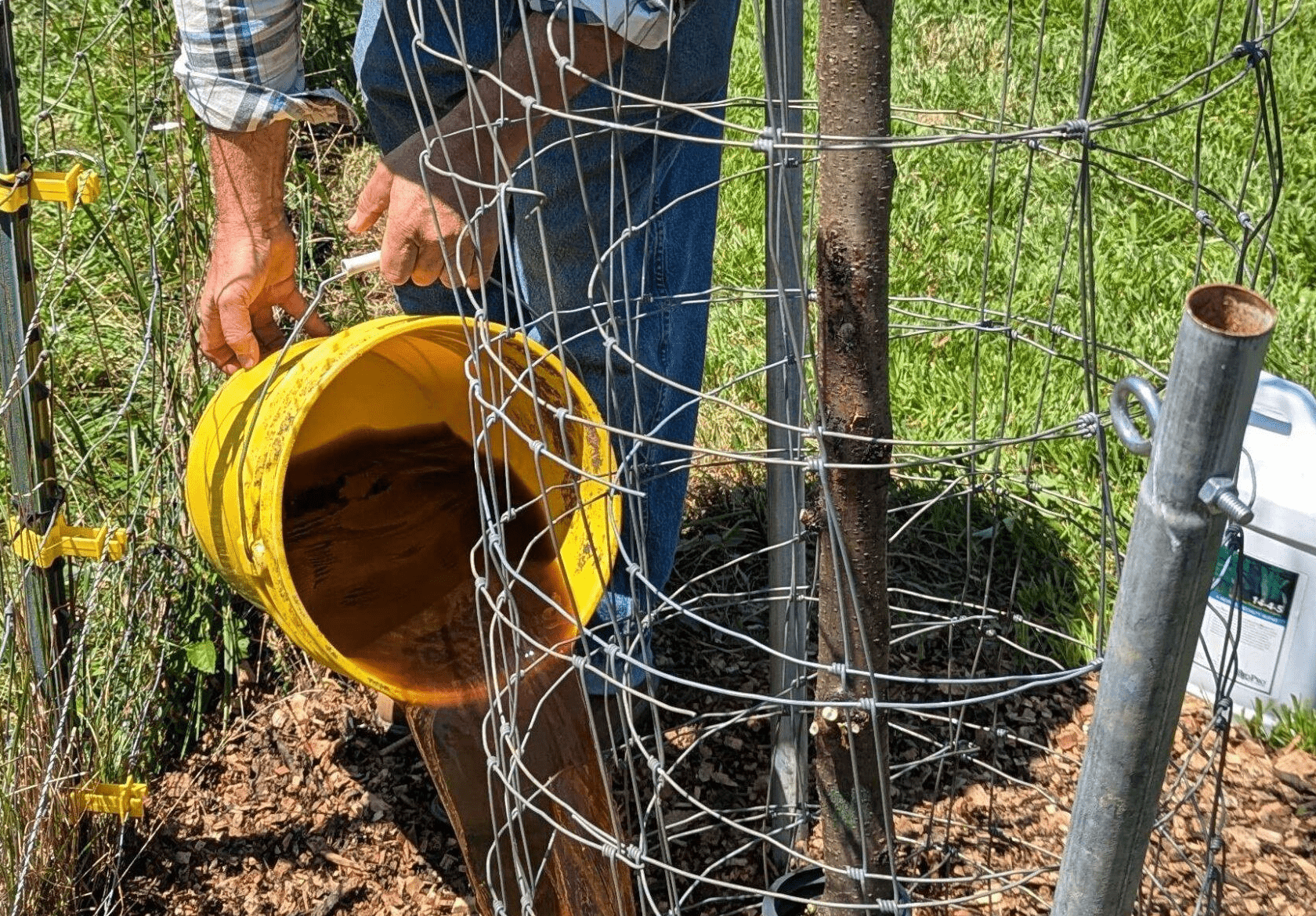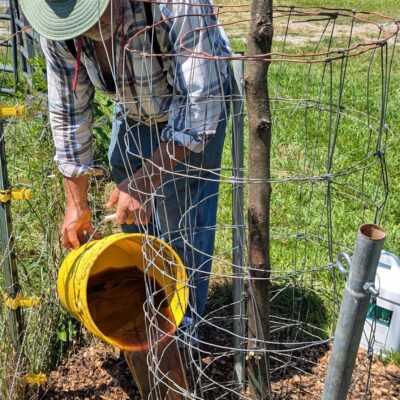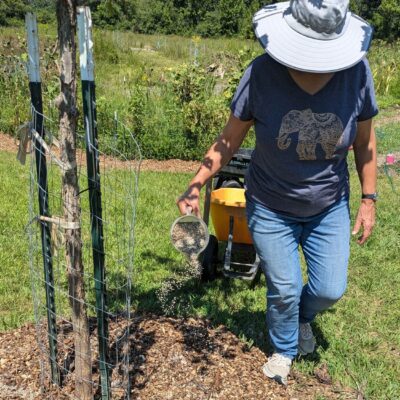It’s past mid-summer, and trees and woody shrubs have set dormant buds in preparation for overwintering. Woody perennial plants may seem inactive, but far from it. Below ground, roots continue to grow, and with adequate moisture, they are busy absorbing mineral nutrients to help jump start growth in the coming year.
The absorbed minerals fall into two basic groups: the macro-elements and the micro-elements. Both are essential and necessary, but differ only in the quantity required for plant function. The macro-elements are nitrogen, phosphorous, potassium, calcium, magnesium and sulfur. The micro-elements include iron, manganese, zinc, copper, boron and molybdenum. Macro-elements are required in percent quantities (that is, parts per hundred), while micro-elements are needed only in parts per million. Quite an order of difference!
Anyway you look at it, the micro-elements are essential for healthy plant growth. Usually, soils that have adequate organic matter, are more apt to provide the minor elements.
Transplanting Trees
When trees are newly transplanted, they lose many of the roots that function to absorb the minerals essential for growth and health. This is sometimes referred to as transplant stress or drought stress. This reduces the tree’s water absorption capabilities and also its ability to take in nutrients.
A newly transplanted tree requires more intensive care for its initial period of establishment. Allow one year for every one-inch caliper as the framework for initial establishment. For example, a two inch diameter tree will require two full years of attention by you. What is mostly going on in a newly planted tree is underground: the plant is putting its energy into growing a new root system. Roots have a very important role: they anchor the plant, absorb water and minerals, and form associations with fungi, and graft to other trees growing nearby. Water helps keep the plant turgid, cools it during hot weather, and is an important component of photosynthesis.
How to Fertilize a New Tree
There are a number of ways to fertilize trees: you can simply add copious amounts of compost and mulch at the base of the tree. This is a great way to care for trees, and I recommend it! You will find many fertilizer options in the marketplace, and figuring out which one is best for you may be a daunting task.
Fertilizers are sold as “complete” if they provide nitrogen, phosphorous and potassium (the NPK on the fertilizer label).
There are both liquid and granular options. Liquids tend to be more quickly plant available, whereas granular fertilizers tend to release their minerals more slowly. Although liquids are faster acting, they can cause phytotoxicity, or burning, if not applied properly. Choose liquid fertilizers formulated with at least 50% slow-release nitrogen. If using a granular, you are less likely to burn plants. With fertilizers, less is usually more!
Case Studies of Tree Fertilization
The American National Standards Institute (ANSI) provide guidelines for tree fertilization. They are broad, of course. The standards allow anywhere from 1 to 6 pounds of actual nitrogen per 1000 square feet of area. That is a large range. But that is where some judgement comes into play. Slow-release fertilizers can be put down at higher rates, soluble fertilizers at lower rates. It may be easier to look at application of a fertilizer on a per acre basis. One pound equates to 45.6 lbs. and six pounds to 274 pounds per acre! Corn, an annual monocot field crop, requires anywhere from 100 to 250 pounds of nitrogen per acre. Such frame work can help guide our application rates, and in the case of new tree planting, I suggest targeting rates that equate to 45 to 90 pounds per acre, depending on what product you are using.
We fertilized two, two-inch caliper trees, each mulched three feet out from the base of the tree. The mulched area equaled 28 square feet in each case. Given their slow growth, I opted to give the trees 3 pounds of nitrogen per 1000 square feet. So here now, is a bit of math. In the one case, where I was using a liquid fertilizer (ArborPlex, a 14-4-5), I applied the following calculations: 28/1000 = 0.028 x 3 lbs. N = 0.084 lbs. N to be applied. ArborPlex is 14/100 or 0.14 lbs. nitrogen per lb. The fertilizer is 10.56 lbs. per gallon. Therefore, 1 gallon contains 1.48 lbs. of nitrogen (10.56 lbs. per gallon x 0.14 N /lb.). To fertilize our tree, I needed to apply 0.05 gallons (0.084 lbs. N /1.38 lbs. N per gal.) or 214 mLs of ArborPlex (0.05 gal. x 3785 mls /gal). Easy, right?
To make the mix, half fill a 5-gallon container with water, add the liquid fertilizer and bring it up to volume with water. Pour the liquid solution around the base of the tree.
We fertilized our second tree using a granular fertilizer. The area of application was 28 square feet, and we wished to apply 3 lbs. per 1000 square feet of area. The amount of fertilizer therefore was 0.028 x 3 or 0.084 lbs. N. We applied an 18-24-12 granular. The nitrogen release per pound equates to 0.18 lbs. N. We therefore needed to apply 0.47 lbs. (0.084 lbs N /0.18 lbs. N /lb.). 0.47 lbs. x 453.6 g = 212 g of granular.
Application was made directly into the mulched bed, and raked in. On steep slopes, consider applying into drill holes using an auger or simply, a pry bar. Keep the hole depth shallow, 6” deep will suffice. Much deeper than 12”, you’ll be past the roots and are at a greater risk of fertilizer leaching.
I hope these guidelines are helpful to you! Next time, we’ll consider more fall garden chores!
~ Signing off for now, Joe





